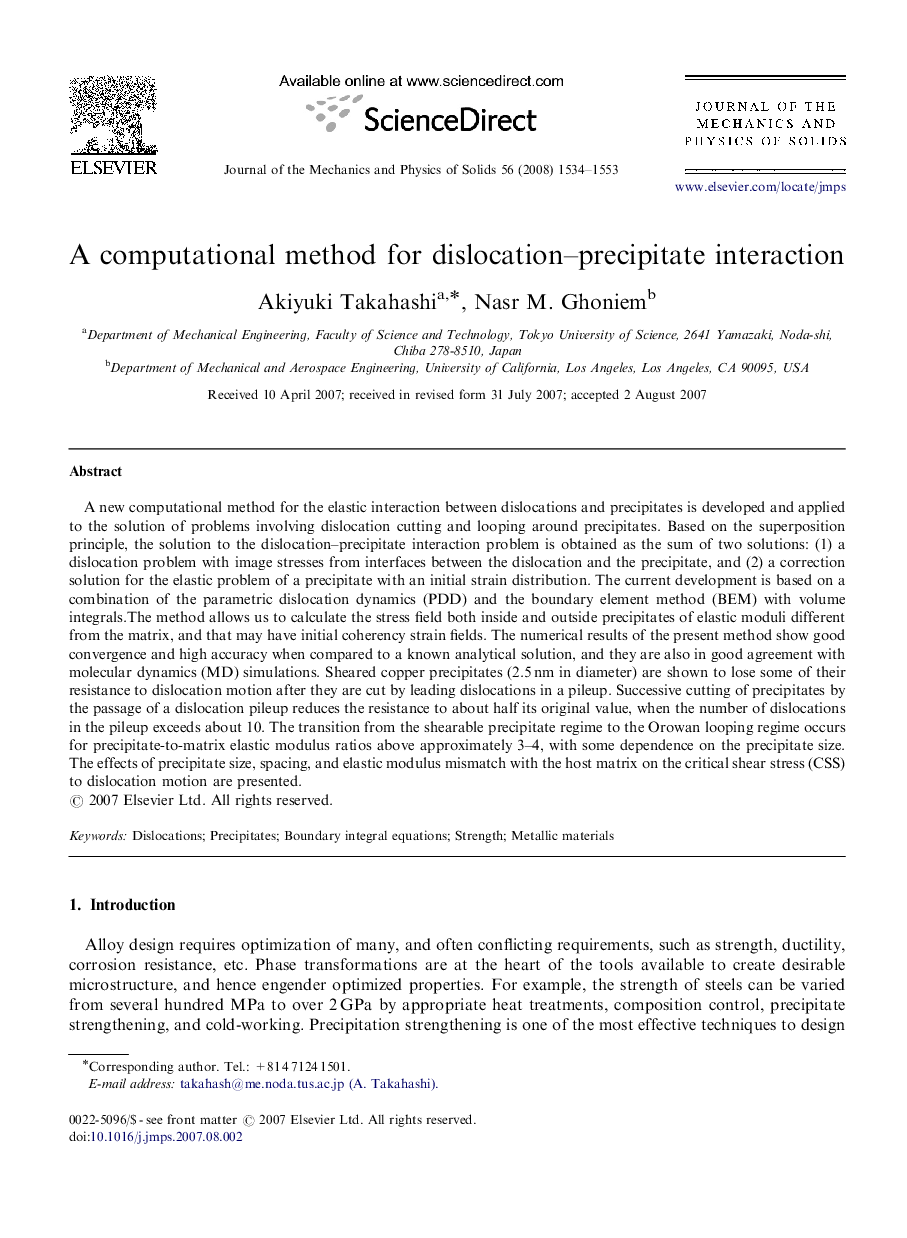| Article ID | Journal | Published Year | Pages | File Type |
|---|---|---|---|---|
| 800063 | Journal of the Mechanics and Physics of Solids | 2008 | 20 Pages |
A new computational method for the elastic interaction between dislocations and precipitates is developed and applied to the solution of problems involving dislocation cutting and looping around precipitates. Based on the superposition principle, the solution to the dislocation–precipitate interaction problem is obtained as the sum of two solutions: (1) a dislocation problem with image stresses from interfaces between the dislocation and the precipitate, and (2) a correction solution for the elastic problem of a precipitate with an initial strain distribution. The current development is based on a combination of the parametric dislocation dynamics (PDD) and the boundary element method (BEM) with volume integrals.The method allows us to calculate the stress field both inside and outside precipitates of elastic moduli different from the matrix, and that may have initial coherency strain fields. The numerical results of the present method show good convergence and high accuracy when compared to a known analytical solution, and they are also in good agreement with molecular dynamics (MD) simulations. Sheared copper precipitates (2.5 nm in diameter) are shown to lose some of their resistance to dislocation motion after they are cut by leading dislocations in a pileup. Successive cutting of precipitates by the passage of a dislocation pileup reduces the resistance to about half its original value, when the number of dislocations in the pileup exceeds about 10. The transition from the shearable precipitate regime to the Orowan looping regime occurs for precipitate-to-matrix elastic modulus ratios above approximately 3–4, with some dependence on the precipitate size. The effects of precipitate size, spacing, and elastic modulus mismatch with the host matrix on the critical shear stress (CSS) to dislocation motion are presented.
